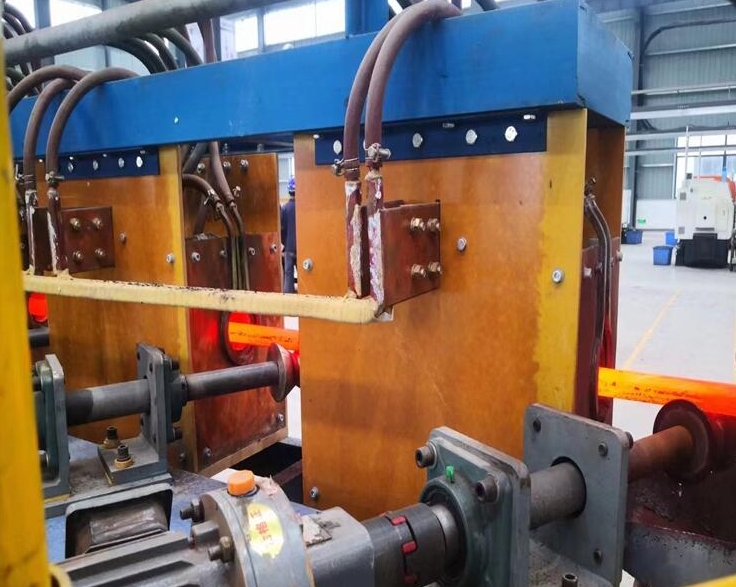- 11
- Jun
Features of steel bar induction heating equipment
Features of steel bar induction heating equipment
Features of steel bar induction heating equipment:
1. Induction heating equipment for steel bars therein, will save material and forging die cost. Since the principle of steel bar induction heating equipment is electromagnetic induction, the heating speed can be achieved by adjusting the frequency and the strength of the current. Ordinary workers can use the steel bar induction heating equipment to work continuously for ten minutes after going to work. , without the need for professional workers to burn the furnace and seal the furnace in advance. There is no need to worry about the waste of heated billets in coal furnaces and gas furnaces due to power outages or equipment failures. Due to the fast heating rate of this heating method, there is very little oxidation. The oxidation burning loss of intermediate frequency heating forgings is only 0.5%, the oxidation burning loss of gas furnace heating is 2%, and the coal burning furnace is 3%. Compared with coal-fired furnaces, ton of forgings can save at least 20-50 kilograms of steel raw materials, and its material utilization rate can reach 98%. The process is energy-saving, and the medium-frequency heating can save 31.5% to 54.3% of the energy of the specific oil heating, and 5% to 40% of the energy of the gas heating. The heating quality is good, the scrap rate can be reduced by 1.5%, and the productivity can be increased by 10% to 30%. Since this heating method heats evenly and the temperature difference between the core surface is extremely small, it also greatly increases the life of the forging die and prolongs the life of the die in forging. 10 %~15%, the roughness of the forging surface is also less than 50um.
2. Steel rod induction heating equipment The heating is uniform, the temperature difference between the core and the surface is extremely small, the temperature control accuracy is high, and the degree of automation is high, which can realize fully automatic operation. Since the heat of induction heating is generated in the workpiece itself, it is easy to achieve uniform heating and small temperature difference between the core and the surface. The application of temperature control system can realize precise control of temperature and improve product quality and qualification rate. The automatic feeding and automatic discharging sorting device is selected, which is matched with the forging host with high degree of automation and high efficiency, and is equipped with special control software, which can realize the automation of the forging production line and give full play to the production capacity of the forging host.
- Steel rod induction heating equipment has a superior working environment, improves the labor environment of workers and the company’s image, is pollution-free, and has low energy consumption. Compared with coal furnaces, induction heating furnaces do not produce strong light, flue gas, dust and other pollution when using steel rod induction heating equipment in forging production. Compared with ordinary flame furnaces, the furnace has high thermal efficiency. Workers will no longer be roasted and smoked by coal stoves, and can meet the requirements of various indicators of the environmental protection department, and at the same time establish the company’s external image and the future development trend of the forging industry. Induction heating is an energy-saving heating method in an electric heating furnace. The power consumption of a ton of forgings heated from room temperature to 1100 ℃ is less than 360 degrees. Steel bar induction heating equipment has the advantages of small size, light weight, high efficiency, excellent thermal processing quality and favorable environment. The intermediate frequency diathermy furnace is the main equipment of the forging workshop. The stability, reliability and safety of its work are the guarantee for the normal and stable operation of the forging production line in the flow operation.

